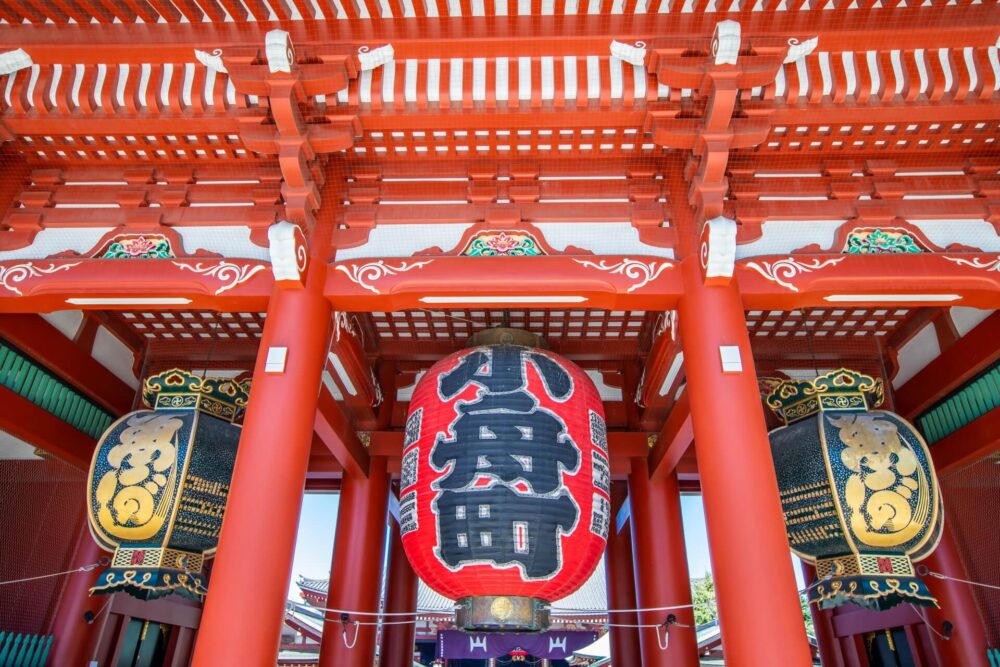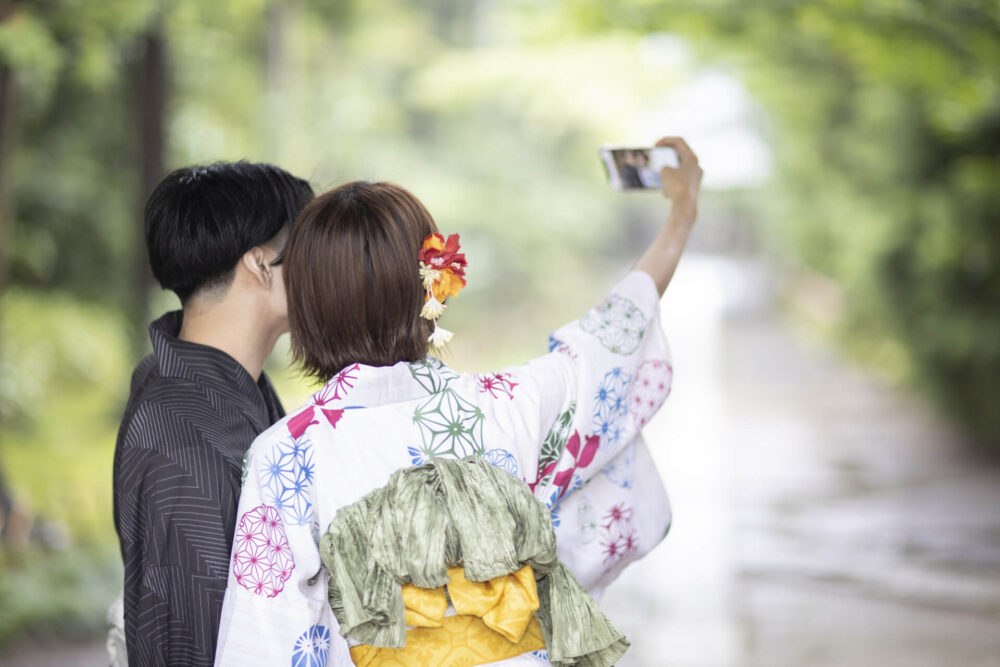SIGHTSEEING
Senso-ji Temple: A Journey Through Japan’s Rich History and Culture
2023.10.25
With over 30 million visitors annually, Senso-ji Temple stands as one of Japan’s quintessential tourist attractions.
Welcoming over 30 million pilgrims and tourists each year from both domestic and international locations, Senso-ji Temple truly embodies the spirit and tradition of Japan. Nestled in Asakusa, the temple complex features iconic structures such as the “Kaminarimon” (Thunder Gate), and the “Denpoin,” which is designated as an Important Cultural Property. As you make your way to the main hall, the bustling “Nakamise-dori” shopping street offers a plethora of traditional sweets, tea, and quintessentially Japanese souvenirs, ensuring a multifaceted cultural experience.
Kaminarimon (Thunder Gate)

The Kaminarimon serves as the grand entrance to Senso-ji Temple and stands as a symbol of Asakusa itself. Its massive lantern, measuring 3.3 meters in width and 3.9 meters in height, has become a popular photography spot for visitors. However, the Kaminarimon’s appeal doesn’t stop there. Pay attention to the intricate dragon carvings at the base of the lantern, the statues of the Thunder and Wind Gods on either side of the gate, and the golden dragon and celestial dragon statues located on the backside of the gate.
Hozomon (Treasure-House Gate)

Situated in front of the temple’s main hall, the Hozomon is an imposing two-story gate, complete with a giant lantern, inscribed with the words “Kobuna-cho.” Flanking the gate are two fierce-looking Nio (Guardian) statues: the open-mouthed “Agyo” on the left and the closed-mouthed “Ungyo” on the right, both of which demand attention.
Five-Story Pagoda

The Five-Story Pagoda is a common feature in many Buddhist temple grounds, and Senso-ji’s pagoda is among the most renowned. Standing at approximately 53 meters tall, it rivals the height of a 15 to 20-story building.
Main Hall of Senso-ji Temple

The Main Hall, also referred to as the Kannon-do, enshrines the temple’s principal deity, the Holy Kannon Bodhisattva. A large lantern, even bigger than the one at the Kaminarimon, hangs prominently in this space. The ceiling paintings, featuring a dragon at the center and celestial beings on either side, are a sight to behold. Photography is prohibited, making an in-person visit essential to fully appreciate these artistic treasures.
Exploring Senso-ji Temple in a Kimono

Strolling through Tokyo’s oldest temple in a traditional kimono transports you to a different era, offering a unique and immersive cultural experience. Numerous shops in the vicinity offer kimono rentals and dressing services, allowing visitors to easily embrace this traditional attire. To truly “experience” Japan’s rich cultural heritage, take a leisurely walk around Senso-ji Temple in a kimono.
Access
To fully enjoy Senso-ji Temple, start at the Kaminarimon, proceed along the Nakamise-dori shopping street, and make your way to the Main Hall. From Tokyo and Ikebukuro stations, it’s a 25 to 35-minute journey, combining the JR Yamanote Line and Tokyo Metro Ginza Line. From Shibuya, it takes approximately 40 minutes via the Tokyo Metro Ginza Line. From Shinjuku, take the Toei Shinjuku Line to Bakuroyokoyama Station, walk to Higashi-Nihombashi Station, and then take the Toei Asakusa Line to Asakusa Station, totaling about 45 minutes.
Official Website: [https://www.senso-ji.jp/]
Related article
-

SIGHTSEEING
Exploring the Tranquil Otagi Nenbutsu-ji: A Hidden Gem in Kyoto’s Foothills
2023.10.23
-

SIGHTSEEING
Kenrokuen: Kanazawa’s Seasonal Splendor and Historical Charm
2023.10.18
-

SIGHTSEEING
Autumn Splendor at Eikandō: Kyoto’s Premier Fall Foliage Destination
2023.10.20
-

SIGHTSEEING
A Journey Through Time: Exploring the Kyoto Railway Museum
2023.10.26
-

SIGHTSEEING
The Wild Charms of Iwatayama: Engage with Nature and Monkeys in Arashiyama Monkey Park
2023.11.06




